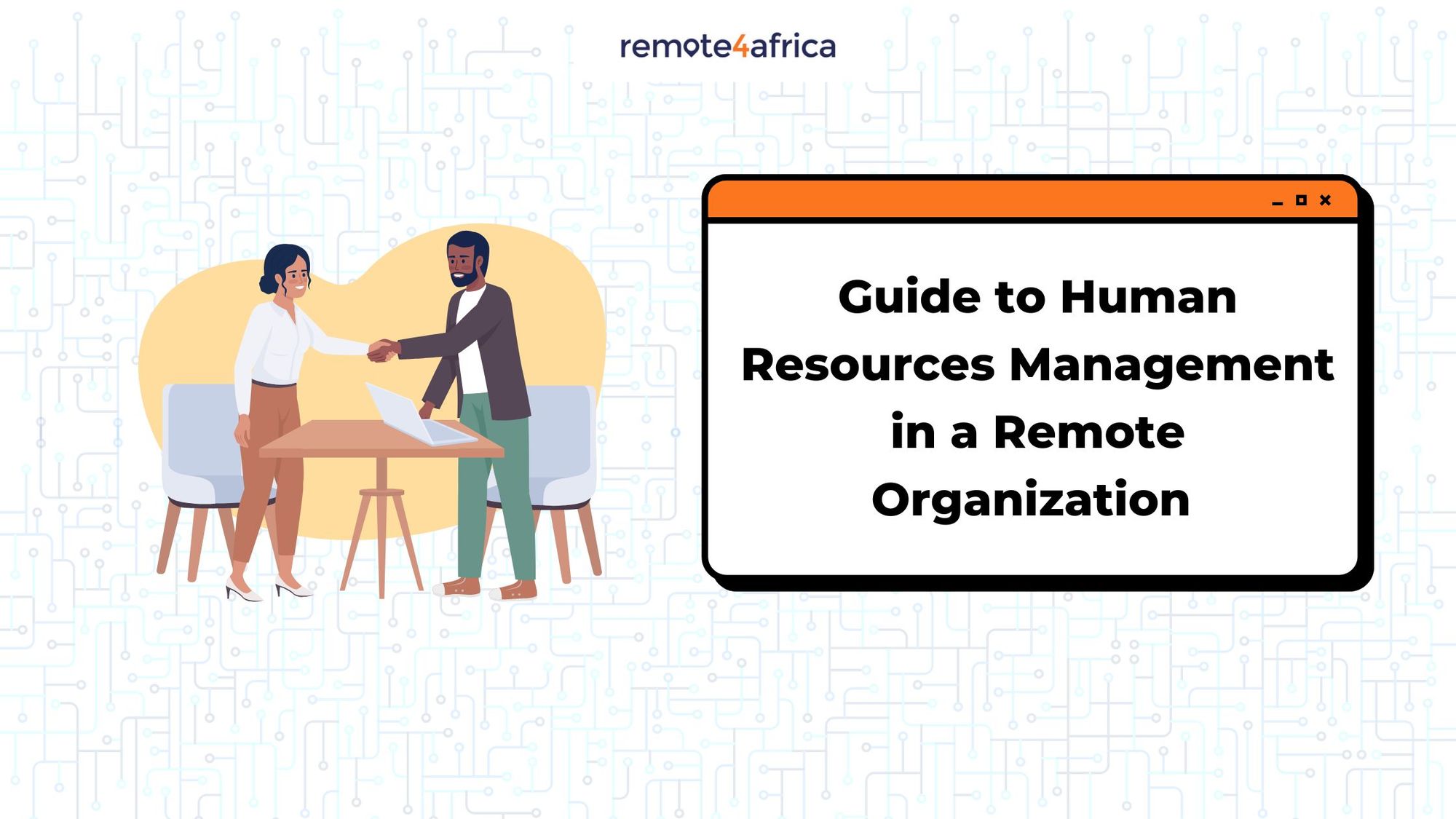Guide to Human Resources Management in a Remote Organization
As an employer or recruiter of a remote workforce, you need to be able to put strategic human resources plans and practices in place that cater to the welfare of the remote staff.

The nature of the remote workforce is relatively new, and sometimes it can be difficult for employers and human resources departments to design policies. They have to take into consideration the fact that workers would not be in a physical building at the same time, which would make it easier to manage them and ensure their productivity.
As an employer or recruiter of a remote workforce, you need to be able to put strategic human resources plans and practices in place that cater to the welfare of the remote staff, promote team cohesion, and also keep your productivity at the optimum level. This guide has been created to help you run a smooth company or organization with remote staff.
Here are the key elements to a successful human resources practice in a remote organization:
The Onboarding Process
It is important to create and develop an onboarding process that is comprehensive and that can also be delivered virtually. Newly employed remote workers should be given access to training materials and resources that will help them settle into their virtual work environment. The virtual onboarding process should also include an introduction between team members; this would help foster team cohesion among them.
Effective communication and collaboration
The fact that your remote workers will not be physically present should not in any way impact smooth communication between team members and management. Make use of video conferencing software and project management tools that would provide a clear communication channel among team members as well as the upper management level.
Design a standard to measure performance.
The performance of a remote worker can be measured with performance indicators that reveal the employee's commitment to work, deadlines for deliverables, task completion, and other productivity measures.
Engage your employees.
The contributions of the remote employees should be acknowledged and rewarded; this would serve as encouragement to the employee and also to the rest of the team. Virtual team bonding activities should be carried out as often as possible in order to boost the morale of the remote workers.
Create flexible work policies
It is important to understand that the reason most people choose remote jobs is so that they will have work hours that provide more flexibility; therefore, create a flexible work policy that would clearly communicate the organization's expectations from the remote staff based on what is suitable for both the organization and the remote staff.
Imbibe Growth Culture
Your remote staff needs to receive training that will help them improve their skills. These trainings can be webinars and online courses that your remote staff can partake in from the comfort of their homes.
Make an arrangement for mental health support
The nature of remote work predisposes the workers to isolation, which can have an effect on their mental health, thereby leading to burnout. To prevent this, a system should be created to promote the well-being of your remote staff.
Cybersecurity and technology
Most of the work done in a remote organization has data going around, and this necessitates the need for added cyber security to ensure your data is safe, both the organization's data and the data of your remote staff.
Constructive feedback and recognition
Remote workers need to know when their efforts are contributing to the productivity of the team; hence, it is important for you as an employer of a remote workforce to give constructive feedback; this aids in the professional growth and confidence of your remote staff.
Stay informed about legal and compliance requirements.
As a recruiter or employer, you should stay informed about regulations and compliance requirements for remote work. This will help you make policies that are in alignment with legal standards.
These guidelines are very intricate for the running of a remote organization; they are just as applicable to an onsite organization. By prioritizing these aspects of the organization, a remote workforce that is optimally productive can be built. Once the system is put in place, contingencies can be taken care of as soon as they appear. If you are searching for a new remote job in human resource, here are the latest Admin and HR remote jobs for you.
